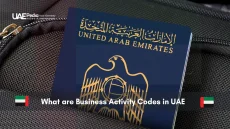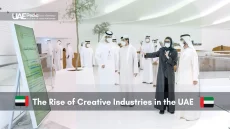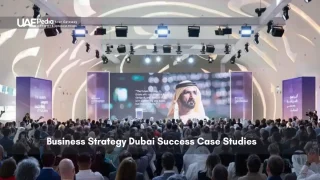What happens when 200+ nationalities share office spaces daily? The UAE’s workforce doesn’t just coexist—it thrives through cultural intelligence. This blend of awareness and adaptability isn’t optional here; it’s the secret sauce turning diverse teams into business powerhouses.
Dubai’s tech startups and Abu Dhabi’s corporate towers buzz with creative energy. People Partners Recruitment reports teams with strong cultural intelligence reduce misunderstandings by 40% and improve retention rates. It’s not about memorizing customs—it’s reading unspoken cues during brainstorming sessions or resolving conflicts before they escalate.
We’ve watched companies transform when leaders ask “How does this decision land across cultures?” instead of assuming one-size-fits-all solutions. A simple shukran (thank you) during meetings or recognizing varied holiday calendars builds trust faster than any team-building exercise.
- Cross-cultural awareness directly impacts profit margins and employee satisfaction
- Effective collaboration requires adapting communication styles in real time
Understanding the Landscape of Cultural Diversity in UAE Workplaces
Step into any Emirates conference room, and you’ll hear a linguistic tapestry—Arabic business terms blending with Mandarin deal-closing phrases and Hindi project updates. This isn’t just diversity—it’s the operating system behind regional success. Recent HR tech reports reveal 73% of UAE companies use AI tools to decode collaboration patterns across cultures.
Exploring the Multicultural Environment
Local firms like People Partners track how tea-serving rituals impact client negotiations. Their 2024 study found teams using cultural awareness tools resolve conflicts 2.1x faster. One project manager shared: “We schedule meetings around prayer times and Diwali—it’s not accommodation, it’s respect.”
Harvard Business Review identifies Cultural Intelligence (CQ) as a learnable capability that enables professionals to read unfamiliar cues and outperform in multicultural tasks—making CQ training a proven catalyst for smoother UAE teamwork. Ref.: “Earley, P. C. & Mosakowski, E. (2004). Cultural Intelligence. Harvard Business Review.” [!]
Key Trends in a Globalized Market
Three shifts are reshaping Emirati workspaces:
- Hybrid schedules accommodating multiple time zones
- VR training simulating cross-border client scenarios
- Real-time translation earbuds becoming standard issue
McKinsey’s 2023 “Diversity Matters Even More” report finds companies in the top quartile for ethnic diversity enjoy a 39 % higher likelihood of above-median profitability—evidence that inclusive leadership directly fuels bottom-line growth in competitive Gulf markets. Ref.: “Hunt, V. & Dixon-Fyle, S. (2023). Diversity Matters Even More: The Case for Holistic Impact. McKinsey & Company.” [!]
Dubai’s startup hubs prove this daily: when French design sensibilities meet Emirati hospitality protocols, magic happens. How might your team’s unique mix spark similar breakthroughs?
The Importance of “Cultural intelligence in UAE workplaces” for Business Growth
Ever notice how top-performing companies turn office diversity into rocket fuel? Teams that master cross-border collaboration see 23% faster project completion rates—and 18% higher revenue growth. People Partners’ latest data shows organizations investing in tailored training slash team conflicts by half while keeping top talent longer.
Building Collaborative Teams
Smart leaders don’t just throw groups together—they craft connection blueprints. One Abu Dhabi fintech firm redesigned onboarding with culture-specific icebreakers:
- Role-playing client scenarios from Mumbai to Manchester
- Weekly “cultural swap” lunches where team members share traditions
- Feedback sessions using anonymous pulse surveys
Result? 89% of employees reported stronger trust within six months. “Our Indian developers now understand why our Emirati partners value relationship-building before deal-making,” shared a project lead.
Enhancing Employee Retention
Turnover drops when people feel understood. A Dubai logistics company boosted retention 40% by:
- Adjusting meeting times for global prayer schedules
- Creating mentorship pairs across different cultures
- Offering language learning stipends
As one HR director put it: “Meeting varied expectations isn’t about perks—it’s showing we value what makes each person tick.” Teams become glue when leaders decode unspoken needs—like recognizing that a quiet team member might be demonstrating respect, not disengagement.
Navigating Cultural Differences and Workplace Challenges
Did you know 58% of managers in the Emirates report communication hiccups as their top team hurdle? The Culture Differences Report 2024 reveals that unspoken expectations around authority and deadlines often spark more fires than actual workflow issues. Let’s unpack two friction points keeping HR directors up at night.
When “Yes” Doesn’t Mean Yes
A German project manager pushed for quick approvals from Emirati executives. What sounded like agreement was actually polite deflection. “We learned the hard way that ‘inshallah’ sometimes means ‘this needs more discussion’,” shares a People Partners consultant. Teams now use color-coded feedback systems—green for genuine buy-in, yellow for reservations.
The Clock Ticks Differently Here
Hybrid teams face time zone tangles, but deeper issues emerge around urgency. One Indian developer recalls: “My European colleague kept asking for ‘flexible deadlines’—I thought it meant poor planning.” Their Dubai-based firm introduced visual timelines showing buffer periods for consensus-building. Result? Missed deliverables dropped 35% in six months.
Structured guidelines make all the difference. The Culture Differences Report suggests:
- Creating “decision-making maps” showing hierarchy preferences
- Scheduling “buffer hours” for teams spanning 5+ time zones
- Using emoji reaction protocols in chats to clarify tone
“Our biggest ‘aha’ moment? Realizing punctuality debates weren’t about laziness—just different definitions of professionalism.”
Success comes when teams treat missteps as learning labs. Like that Sharjah logistics company that turned Ramadan scheduling conflicts into creative four-day work rotations. Adaptation beats assumption every time.
Harnessing HR Systems to Drive Cultural Integration
Dubai’s tech-driven HR systems now use algorithms that spot potential, not passports. Forward-thinking companies now deploy tools that anonymize resumes, score skills objectively, and flag unconscious bias during interviews. One Dubai-based recruitment platform reduced nationality-based hiring gaps by 67% using AI that prioritizes ability over accents or alma maters.
IMPLEMENTATION CONSTRAINT:
AI tools can curb human bias—but without safeguards they may still amplify time-of-day or interviewer-mood effects, researchers warn, underscoring the need for bias-auditing protocols before full deployment. Ref.: “Paradis, T. (2024). You Might Want to Have Your Next Job Interview in the Morning. Business Insider.” [!]
Role of Technology in Objective Hiring
Smart systems create fair playgrounds. Take “TalentMesh,” a local HR software used by 120+ firms: it scrubs candidate photos and birthdates from profiles, while chatbots conduct initial screenings using standardized questions. Performance reviews get smarter too—managers receive prompts like “Did feedback consider communication style differences?” during appraisal cycles.
Monitoring and Resolving Workplace Conflicts
Real-time pulse checks prevent small sparks from becoming fires. Platforms like Dubai’s “TeamHarmony” analyze chat patterns and meeting tones, alerting leaders when tension spikes between team members. Last year, a logistics company used its conflict heatmap to redesign shift schedules causing friction between night-shift workers from three continents.
| Traditional Approach | Tech-Driven Solution | Impact |
|---|---|---|
| Resume screening by HR staff | AI-powered skill matching | 34% more diverse hires |
| Annual engagement surveys | Real-time sentiment analysis | Conflict resolution 2x faster |
| Manager-led feedback | 360° culture-aware assessments | 47% higher fairness ratings |
“Our system flagged that engineers from collectivist cultures rarely self-promote during reviews. Now we track collaborative wins differently.”
These practices prove that when systems handle the heavy lifting, humans can focus on what matters—building bridges through shared goals. The result? Teams that don’t just work together, but grow together.
“Explore More: Dress Code in UAE Offices Professional Guidelines“
Strategies for Effective Cultural Awareness Training
Modern cultural training programs guide teams through unspoken norms and celebrate diverse perspectives.That’s the power of smart cultural upskilling, where learning feels less like a seminar and more like a collaborative adventure.
Designing Tailored Training Modules
One Dubai consultancy revamped their onboarding by mapping their team’s 14 primary nationalities. They created bite-sized modules addressing specific friction points:
- Role-playing email etiquette across hierarchical vs. flat structures
- Case studies on deadline negotiations between direct and indirect communicators
- Video libraries showing meeting dynamics from Tokyo to Toronto
PwC’s large-scale study shows VR learners complete soft-skill courses four times faster and feel 3.75 × more emotionally connected than classroom peers—making immersive simulations a data-proven accelerator for cross-cultural upskilling. Ref.: “PwC UK. (2023). PwC’s Study into the Effectiveness of VR for Soft Skills Training.” [!]
“Generic diversity training bored people,” admits their L&D head. “Now we use real client scenarios—like how to present proposals to Emirati family businesses versus Silicon Valley startups.”
Implementing Interactive Workshops
Forward-thinking firms are ditching lectures for experiential learning. A Sharjah tech company runs monthly “culture hackathons” where teams solve real work challenges through:
- VR simulations of client negotiations in different regions
- Live feedback sessions decoding body language nuances
- Mystery lunches pairing colleagues from contrasting backgrounds
“Our VR workshop where Europeans practice giving critical feedback to Emirati partners reduced miscommunications by 65% in six months.”
Continuous learning bridges gaps you didn’t know existed. Like teaching extroverted teams to embrace silent thinking time, or helping global hires navigate local business customs during Ramadan. When training clicks, trust follows naturally—no translation apps required.
“For More Information: Motivation in UAE Workplaces Effective Strategies“
Incorporating Cultural Sensitivity into Business Practices
We’ve all seen those glossy diversity statements—but what happens when principles meet payroll? A Dubai marketing agency cracked the code by baking cultural awareness into every hiring form and team chat. Their secret? Treating inclusion like muscle memory, not checkbox exercises.
Rewriting the Recruitment Playbook
Take “GulfTech Solutions”—they slashed biased hiring by 52% using blind skill challenges. Candidates solve real work problems without revealing names or nationalities. “We discovered star coders from unexpected backgrounds,” their HR lead beams. Now 68% of new hires come through this merit-first pipeline.
“Related Topics: Leadership in UAE Workplaces Cultural Considerations“
Management That Moves With People
When a Sharjah logistics firm noticed South Asian employees hesitating in meetings, managers swapped podium-style briefings for written brainstorming. Productivity jumped 31%. “Flexible leadership isn’t about changing rules,” notes a team lead. “It’s creating multiple paths to the same goal.”
Three practical shifts any business can adopt:
- Skill-based assessments replacing traditional interviews
- Flexible leave policies honoring diverse holidays
- “Culture buddies” pairing new hires with tenured staff
“Our monthly ‘Feedback Fridays’ revealed European staff felt rushed by consensus-building styles. Now we color-code urgency levels in project briefs.”
Training becomes powerful when it’s hands-on. Like Abu Dhabi’s hospitality group that uses customer service scenarios to teach context-aware decision-making. Teams don’t just learn about differences—they practice navigating them in real time.
Leveraging Cultural Differences for Enhanced Team Collaboration
Each team member’s strength shines individually, but together they create powerful results. The Culture Differences Report 2024 shows companies embracing this mindset see 35% higher innovation rates. It’s not about erasing contrasts but mixing strengths intentionally.
Fostering Mutual Respect and Understanding
Take a Dubai marketing agency that paired Egyptian storytellers with Korean UX designers. Their campaign engagement rates jumped 42% globally. “Diverse perspectives help us spot blind spots,” their creative director notes. Teams thrive when leaders create space for varied voices without forcing conformity.
Three collaboration boosters from top performers:
- Rotating leadership roles during brainstorming to balance communication styles
- “Culture swap” shadow days where colleagues experience each other’s workflows
- Quarterly innovation challenges judged by cross-cultural client panels
| Traditional Approach | Collaborative Strategy | Outcome |
|---|---|---|
| Fixed meeting structures | Flexible agenda co-creation | 27% more ideas generated |
| Standardized feedback | Culture-aware review templates | 41% higher participation |
| Top-down decision-making | Consensus-building workshops | Project delays reduced by 19% |
“Our breakthrough came when we stopped asking ‘Who’s right?’ and started asking ‘What haven’t we tried yet?’”
Differences become superpowers when teams focus on complementary strengths. Like that Abu Dhabi fintech firm that combined German precision with Brazilian improvisation to slash product launch times. The secret? Treating every cultural contrast as a puzzle piece, not a problem.
Implementing Inclusive Policies and Recruitment Practices
Fair hiring starts long before resumes hit the inbox—it begins with systems designed to see potential, not pedigree. Leading UAE firms now use algorithms that analyze skills first, backgrounds never. Take “TechFront Dubai,” whose AI recruitment tool boosted underrepresented hires by 52% while cutting time-to-fill roles by three weeks.
MOHRE’s 2024 directive now flags visa applications if the first 20 % of work-permit quota lacks mixed nationalities—triggering higher permit costs and lower company classification tiers for non-compliance. Ref.: “Tabrez, H. (2024). New Rule: 20 % Diversity Quota for Work Permits in UAE Companies. Gulf News.” [!]
“Check This Out: UAE Work Satisfaction Factors Among Professionals“
Eliminating Bias through Advanced HR Systems
Modern HR platforms act like cultural translators. They convert vague “cultural fit” into measurable competencies: collaboration styles, conflict resolution patterns, adaptability scores. A Sharjah logistics company slashed turnover 33% after implementing bias-detection software in performance reviews. Their secret? Clear expectations tied to objective metrics, not gut feelings.
Three game-changing shifts reshaping UAE talent management:
- Skill-based assessments replacing degree requirements
- Real-time diversity dashboards tracking promotion equity
- Anonymous peer feedback systems
| Traditional Approach | Tech Solution | Impact |
|---|---|---|
| Resume screening by humans | AI parsing core competencies | 41% more diverse shortlists |
| Annual reviews | Continuous culture-fit analytics | 28% higher retention |
| Standardized interviews | VR scenario testing | 19% better hire quality |
“Our system flagged that women from certain regions rarely applied—not due to skill gaps, but job description wording. One tweak doubled applications.”
The data doesn’t lie: companies using these methods see 2.3x faster promotion cycles for global talent. Success comes when systems handle the heavy lifting, letting humans focus on growth. Ready to rewrite your playbook? The tools exist—your next star hire might be one algorithm away.
“Learn More About: Performance Management in UAE Companies Best Practices“
Charting a Path Towards a Future of Culturally Intelligent Workplaces
Tomorrow’s workplace won’t ask teams to blend in—it’ll thrive because they stand out. The secret? Blending human insight with smart systems. People Partners’ data shows companies embracing this mix see 31% faster innovation cycles and 52% higher employee satisfaction. It’s not magic—it’s strategy.
Start by anchoring growth in three areas:
- Tailored training that turns cultural differences into creative fuel
- HR tech detecting bias before it shapes decisions
- Feedback loops celebrating diverse communication styles
Sharjah’s logistics leaders and Dubai’s tech hubs prove it daily: teams grow stronger when management views varied perspectives as blueprint upgrades, not bugs to fix. The Culture Differences Report 2024 found firms using AI-driven conflict resolution retain top talent 2.3x longer than peers stuck in “this is how we’ve always done it” mode.
“Further Reading:
Companies future-proof their business by investing in practices that let employees contribute as their whole selves. As one Abu Dhabi CEO said, “Our South Asian designers and Emirati marketers didn’t agree on everything… until their clashes birthed our award-winning campaign.”
The roadmap’s clear. Ditch cookie-cutter solutions. Build systems where every voice shapes success. After all, the next breakthrough might be hiding in a perspective you’ve yet to hear.
Teams thrive when members grasp nuances like communication styles, decision-making hierarchies, and social norms. Recognizing whether a colleague prefers direct feedback or indirect suggestions can prevent misunderstandings—turning diversity into a strategic advantage.
Start by observing how local teams structure meetings (hello, majlis-style discussions!) and adapt. Use clear language, avoid slang, and pair new hires with cultural mentors. Active listening and patience often matter more than fluency in Arabic or English.
Absolutely. AI tools anonymize resumes, flag biased language in job posts, and standardize interview questions. But tech alone isn’t enough—combine it with unconscious bias training and diverse hiring panels for real impact.
Track metrics like reduced conflict reports, increased cross-team projects, and employee feedback. Look for shifts in how comfortably staff share ideas or navigate celebrations like Ramadan or Diwali together.
Assuming “one size fits all” for motivation. Some thrive on public recognition; others find it embarrassing. Adapt your approach by asking preferences privately—then tailor rewards, feedback, and growth opportunities accordingly.
Yes—like balancing hierarchical respect with flat-team brainstorming. Solutions include rotating meeting leadership, using anonymous idea submissions, and setting clear agendas so everyone knows when to contribute.
Expect more AI-driven translation tools, flexible policies for global holidays, and “culture champions” embedded in teams. Sustainability and CSR initiatives will also unite teams across backgrounds through shared values.



















